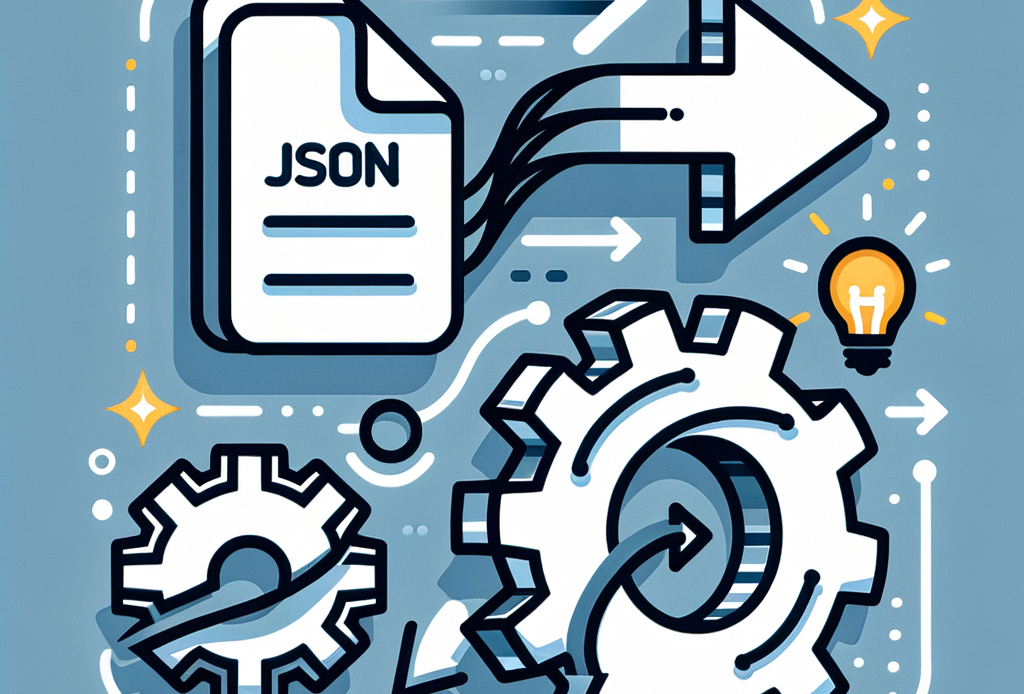Stunning Guide: Effortless JSON Workflow Import in n8n
When it comes to automating workflows and connecting various applications, n8n shines as a powerful open-source tool. As users dive into n8n’s capabilities, understanding how to handle data formats is crucial. Specifically, mastering the JSON workflow import can streamline tasks and improve overall efficiency. In this article, we will explore a structured approach to effortlessly import JSON workflows into n8n.
What is n8n?

Before delving into the intricacies of JSON workflow import, it’s essential to understand what n8n is. As a fair-code licensed integration platform, n8n allows users to create, manage, and automate workflows without deep programming knowledge. With n8n, connecting APIs and automating tasks across applications becomes an accessible task for technophobes and experts alike.
As an open-source tool, n8n provides users with the flexibility to modify the software in line with their requirements, assuring long-term sustainability and community support.
Understanding JSON Workflows in n8n
The core of n8n’s functionality relies heavily on JSON (JavaScript Object Notation), a lightweight data interchange format widely used for transmitting data in web applications.
In n8n:
– Nodes: Each operation in a workflow is represented by a node.
– Connections: These nodes are interconnected to form a sequence of operations.
– Triggers: Workflows begin with a trigger event, initiating the sequence.
Understanding how to structure and import these workflows using JSON is vital for efficient automation.
Preparing Your JSON Workflow
Before importing, ensure that your JSON workflow is correctly formatted. Here are some key considerations:
1. Validation: Check for syntax errors using JSON validators such as JSONLint. Proper formatting is crucial for n8n to interpret the data without errors.
2. Node Configuration: Each node in your JSON workflow should have all necessary configurations set, including authentication details, parameters, and connections to other nodes.
3. Exporting JSON: If you have an existing workflow you want to import, you can easily export it from n8n. Simply navigate to the workflow and select the export option. This will generate a JSON file that you can modify as needed.
Steps to Import JSON Workflows into n8n
Now that you have your JSON formatted correctly, the next step is to import it into n8n. Follow these steps to ensure a smooth import process.
Step 1: Accessing the n8n Interface
Open your n8n application. You can use either the web interface or a local instance. Log in and navigate to the main dashboard.
Step 2: Creating a New Workflow
1. Click on the “+” button to create a new workflow.
2. You will be taken to a blank canvas where nodes can be added. However, for importing a workflow, you can skip node creation.
Step 3: Importing the JSON Workflow
1. In the top-right corner of the interface, you’ll find the three-dot menu (or a similar options icon).
2. Click on it and select “Import.”
3. A dialog box will appear asking you to paste your JSON. Either paste the content of your JSON file here directly or upload the JSON file if prompted.
Step 4: Reviewing the Imported Workflow
After importing, n8n will parse the JSON and display the workflow on your canvas. Here’s what to do next:
1. Check for Adjustments: Look over the nodes and their configurations for accuracy. Sometimes connections between nodes may require manual adjustment.
2. Reset Credentials: If the workflow requires authentication with third-party services, ensure you update any credentials needed for the workflow to run successfully.
3. Validation and Testing: Save your workflow and conduct a test run. Monitoring the execution logs will help you spot any potential issues early on.
Best Practices for JSON Workflow Management
To manage your JSON workflows effectively, consider these best practices:
Maintain Version Control
Using services like Git for version control ensures that you can track changes made to your JSON workflows over time. This is especially crucial for teams collaborating on projects.
Document Your Workflows
Add comments within the JSON structure where necessary to explain specific nodes or configurations. Clear documentation aids in onboarding new team members and serves as a reference for future adjustments.
Regular Backups
Regularly backing up your n8n workflows is essential to prevent data loss. Utilize the export feature frequently, saving versions at various stages during your workflow development.
Troubleshooting Common Import Issues
Despite its user-friendly nature, users may encounter some hiccups while importing JSON workflows. Here are tips to troubleshoot common problems:
Syntax Errors
If n8n displays an error after importing, revisit your JSON file and ensure that it meets proper JSON standards. Even minor formatting issues—like missing commas or unclosed brackets—can derail the import process.
Node Recognition
If you notice that specific nodes aren’t functioning as intended, verify that you have included all required settings in your JSON. Sometimes, custom nodes may require additional configurations that aren’t captured during exporting.
Connection Issues
If workflows fail to execute properly post-import, check the connections between nodes. Each node must be appropriately linked based on the logical flow of operations.
Conclusion
Mastering the JSON workflow import in n8n not only enhances productivity but also opens doors to limitless automation possibilities. With the steps outlined in this empowering guide, you can efficiently create, import, and manage JSON workflows. As you continue to explore the capabilities of n8n, you enhance your toolkit for seamless automation, making life a little easier one node at a time. Embrace the world of automated workflows, and watch how it transforms your day-to-day tasks!
